Gallery 400 exhibit celebrates Chicago’s community art scene

A current exhibit at the University of Illinois Chicago’s Gallery 400 explores not just art but art education and its fundamental impact on Chicago over five decades.
“Learning Together: Art Education and Community” will run until Dec. 14. It highlights the progressive work of Chicago artist-educators from the mid-1960s through the 2010s and their collaborations with young students and teachers participating in art programs at schools, churches, and informal community groups throughout the city. Social justice and community progress appear again and again as unifying themes.
“Art education is foundational to the art community in Chicago and community cohesion,” said Lorelei Stewart, director of UIC Gallery 400 and co-curator of the exhibit. “It’s in the classrooms. It’s in the parks. It’s in the community organizations where people are learning and participating in art.”
The exhibit is part of Art Design Chicago, a citywide collaboration initiated by the Terra Foundation for American Art that celebrates the city’s artistic heritage and creative communities. At UIC’s Hull-House Museum until July 2025 is a sister exhibit: “Radical Craft: Arts Education at Hull-House, 1889-1935,” displaying the work of immigrant artists and reformers at the country’s most important social settlement house in the late 19th and early 20th centuries.
Denny Mwaura, UIC Gallery 400 assistant director and exhibit co-curator, said “Learning Together” showcases the creativity and channels that students of diverse backgrounds employed to drive social justice goals.
He pointed to a piece by artist and teacher Nicole Marroquin. The artwork is made of historic documents and photos from the 1968-74 student uprisings in the former Froebel and Harrison high schools in Pilsen. It’s a testament to the success of the Black and Latino students there who demanded a school that represented them. Their protest led to the construction of Benito Juarez Academy High School.
“A good chunk of the work here celebrates different communities and children of various cultural heritages and also thinks broadly about the work that students have done bringing about social justice or even self-determination,” said Mwaura.
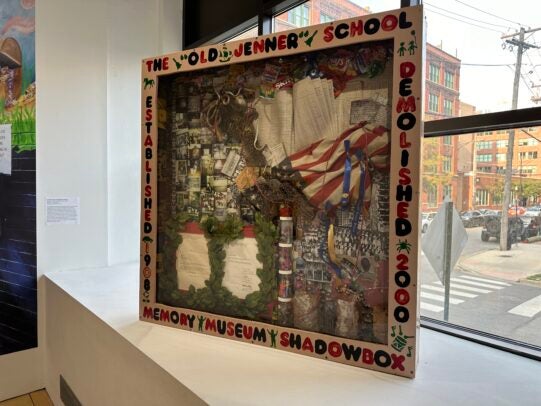
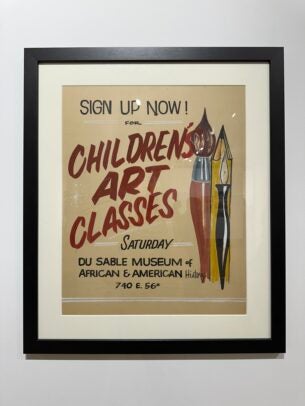
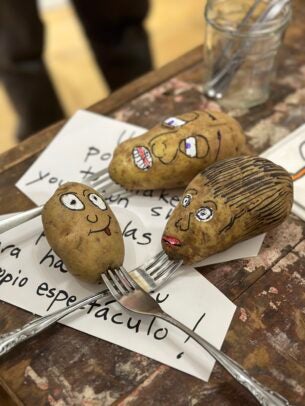
Photos: Anna Dworzecka/UIC
Co-curator Inés Arango-Guingue said the exhibit dramatizes UIC’s long-time involvement in the history of art education in Chicago. She said the foundation for many of the projects represented in the exhibit can be found in Jane Addams’s work at Hull-House, which is now part of UIC.
“UIC carries that legacy, and as a public institution, it is very important to have all of these projects which show democratic and participatory processes that have been involved in developing kids’ education and lives,” she said.
Among her favorite pieces is “Memory Museum Shadowbox, 2000,” made up of artifacts from the former Edward Jenner Elementary Academy near the Cabrini-Green public housing projects. The elementary school’s original building was demolished to make way for a new campus nearby, and the shadow box is filled with mementos gathered by the school’s art teacher, Mathias “Spider” Schergen, and his students, as well as Chicago Arts Partnerships in Education artist Cynthia Weiss.
These include letters written to the students by Coretta Scott King and her children in 1968 after the death of her husband, Martin Luther King Jr.
“It encapsulates a lot of feelings and struggles of a community that was then displaced,” said Arango-Guingue. “It speaks about a teacher’s project working with his students and memorializing all the changes they were going through. They built a museum within an empty school that was going to be demolished.”
Finding voice
Roque del Toral, a UIC alum who grew up in Pilsen, said the Pros Arts Studio was a catalyst for arts education in the community when he was a youth.
At UIC Gallery 400, Toral stood before a sprawling display of ephemera showcasing the group’s reach in the Pilsen neighborhood, including puppets made from potatoes, worn gym shoes, papier mâché figures and dozens of flyers advertising various projects.
“All the kids from the neighborhood would just hang out there and participate in the different programs they had,” said Toral. “A lot of the kids, like myself, didn’t have much of a chance to get out of the neighborhood. But this brought the world to you.”
The studio, which opened in 1978, led to educators organizing workshops in schools city-wide, leading initiatives ranging from Día de los Muertos parades to the “Hotline 21” call-in television program – a clip of which is included in the exhibit – during which students engaged with readings and puppet shows and spoke about social issues on public access television.
Toral said the community arts group helped spark his creativity and self-confidence, leading him to pursue an electrical engineering degree from UIC.
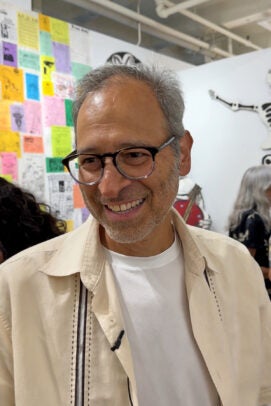
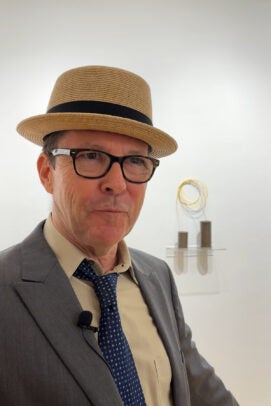
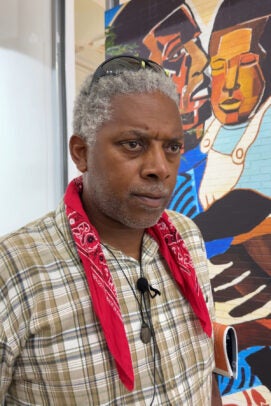
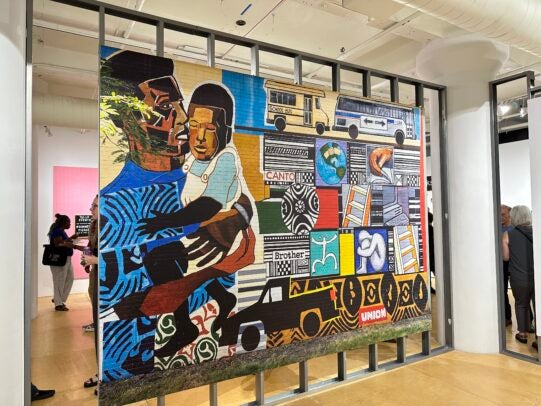
Photos: Anna Dworzecka/UIC
“What they brought to me was the creativity that you have in art and being able to visualize things,” said Toral. “That’s one of the things I use in my professional career, being able to look at things from a different angle.”
After earning two degrees in art at UIC, Jim Duignan opened the Stockyard Institute in 1995 in an abandoned school in the Back of the Yards neighborhood to engage youth, residents, and artists. The first student artists there were gang members intrigued by the chance to make art, he said.
“They just hung around, and something happened,” said Duignan, now the institute’s director and a DePaul University professor. The institute, now affiliated with DePaul, expanded throughout Chicago and has an international reach. Among his works on display in the “Learning Together” exhibit is a bronzed tin-can phone joined by a string.
“That’s my original cup phone, probably the first piece I made as a kid, an invention to listen through walls and find my voice,” said Duignan. “For me, that’s always operated as a kind of symbol of art education.”
At Gallery 400, Bernard Williams, an artist with the Chicago Public Art Group, stood before a detail of “Urban World at the Crossroads,” a vibrant mural he, John Pitman Weber and Lynn Edwards completed with a team of 37 high school students in 1997. The 100-foot-long mural still stands outside Orr Academy High School on Pulaski Road.
“I became an artist in part because of community-based projects that supported young high schoolers,” he said. “Art teachers are often the first part of the budget that gets cut in schools, so it’s been really important that outside organizations have partnered artists with schools.”
